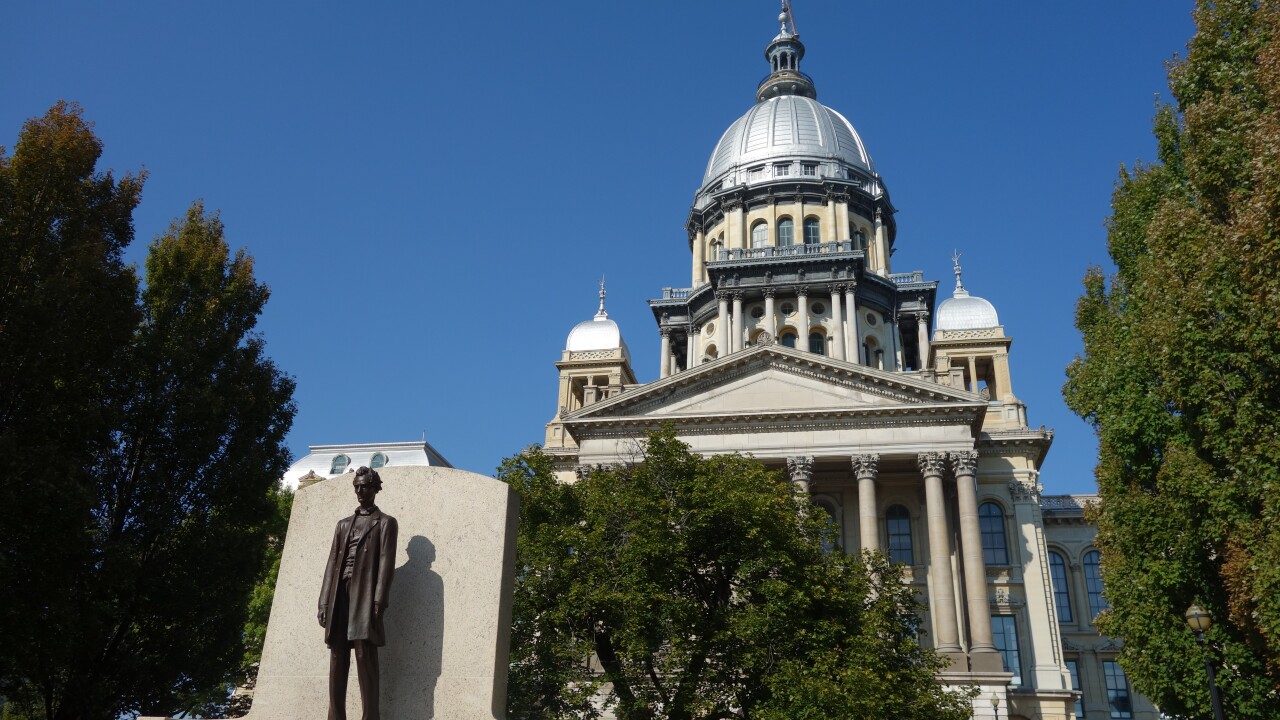Reeling from the effects of the COVID-19 pandemic, which wiped $9 billion of wealth from New York City’s coffers, the mayor and the city council agreed on a budget that few really like or think will solve all the city’s long-term needs.
In the early morning hours of July 1, the City Council
The final budget is down from the $89.3 billion

“Because of the coronavirus, because of the economic crisis, because of so much that has happened to us — layer upon layer, crisis upon crisis — we have lost so much, particularly in human terms in this city,” de Blasio said. “We've lost so many things, including the money that helps our city government to run ... $9 billion evaporated — gone in the course of just a few months. And that's what we've had to deal with here. And it was a challenge when you suddenly are missing $9 billion to come to an agreement to figure out the priorities.”
The City Council said it fought for — and won back — millions in social program cuts that were in April's executive budget.
“The $88.19 billion budget, which is on time and balanced, was negotiated with a focus on achieving equity, particularly for low-income communities of color,” Council Speaker Corey Johnson, Finance Committee Chair Daniel Dromm and Capital Budget Subcommittee Chair Vanessa Gibson said in a joint statement. “Despite unprecedented challenges due to a $9 billion revenue shortfall from the COVID-19 pandemic, the Council fought for and won $700 million for programs and initiatives left out of the FY 2021 executive budget.”
It was the first budget in a long time that came in the midst of econimic turmoil.
“This is the first time the mayor had to deal with a declining revenue base. For the most part, the mayor and City Council really didn’t implement recurring spending cuts. It was really a combination of spending delays and draws from reserves,” said Howard Cure, director of municipal bond research for Evercore Wealth Management.
“The spending delays include canceling the July class of police cadets, reduction in the police capital budget and $1 billion dollars in labor savings that have yet to be negotiated," Cure said. "Attempts to reduce police overtime may also be specious during an era of civil unrest. I assume that the threat to lay off up to 22,000 workers will bring the unions to the bargaining table to get some concessions.”

The Citizens Budget Commission said the deal was only the first in a painful set of steps the city must start taking.
"New York City leaders may be breathing a sigh of relief for meeting the budget deadline after particularly arduous negotiations, but the fiscal crisis is far from over,” said CBC President Andrew Rein. “The budget for fiscal year 2021 is precariously balanced and actions taken do not go far enough to shrink large budget gaps in fiscal year 2022 and beyond. New York City’s leaders did not make sufficient hard choices needed to put the city on a firmer fiscal foundation for the long-term.”
Cure noted that there was a legal impediment to amassing extra cash.
“One of the weaknesses of New York City budgeting is the statutory inability to build general fund reserves. As a consequence, the city had to resort to withdrawing monies set aside primarily for employee benefits,” Cure said. “As OPEB liabilities continue to grow, reserve funds dedicated for this purpose should be treated similarly to pension funds and left to be invested and grown and not used to balance operating budgets.”
Council members said the budget was one of the most difficult they have had to craft.
“This was an immensely difficult budget to pass. The Council was presented with painful decisions, but we never lost sight of our progressive priorities or vision for New York City,” said Council Member Daniel Dromm, Finance Committee chair. “This budget significantly scales back funding for law enforcement at time when crime is at an all-time low and redirects those dollars towards services that uplift our communities during this time of great hardship.”

The NYC Independent Budget Office noted the city’s capital budget remained fairly large.
“Although the city’s fiscal challenges have led the mayor and City Council to delay the schedule for some major capital expenditures such as the production of affordable housing and the construction of new jails, the four-year capital plan remains sizable, with more than $63 billion in planned commitments through fiscal year 2024,” said Doug Turetsky, IBO’s chief of staff.
By far, the most contentious and divisive issue in the budget was the cuts to the New York City Police Department.
“The fiscal year 2021 adopted budget includes $837 million in cuts and transfers to the New York Police Department expense budget. When combined with associated costs, these cuts remove $1 billion from the NYPD’s spending,” the Council said. “This was a hard-fought battle, which marks the beginning of the Council’s efforts to not only limit the size and scope of the NYPD, but also reimagine how we structure criminal justice and public safety in this city.”
The NYPD funding reductions include about $484 million in direct cuts, $354 million in shifts to other agencies and $162 million shifts in associated costs, as well as a movement of $500 million in capital costs from the NYPD capital budget which will go to other infrastructure needs.

The budget eliminates two of the four NYPD graduating cadet classes, dropping headcount by 1,163 uniformed officers; returns control of school safety to the Department of Education; removes the NYPD from homeless outreach; removes crossing guards from NYPD; and reduces overtime spending by $352 million and instituting oversight on overtime.
NYC Comptroller Scott Stringer lambasted the mayor and the council, calling the cuts to the NYPD a “bait and switch” tactic.
“The ‘$1 billion cut’ to the NYPD proposed by the Mayor and the City Council is not a $1 billion cut — it's a bait and switch and a paper-thin excuse for reform. That is especially true of proposals to slash uniformed police overtime by 60% with no plan on how to get there,” Stringer said.

“And the same is true of the gimmicks in this proposal that only reshuffles the deck and folds our opportunity to bring change," Stringer said. "Meaningful change in this moment won’t come by shifting police from one agency to another, and budget tricks won’t bring an end to the status quo. The movement in the streets won’t be suppressed by manipulated math.”
The CBC said more savings could have been achieved.
“Mayor Bill de Blasio and the New York City Council agreed to a budget that is balanced with reserves, federal aid, cuts, potentially optimistic economic and revenue assumptions, questionable savings from police overtime, and unspecified savings from working with municipal labor unions,” Rein said. “Reducing police overtime by almost $300 million is highly unlikely given the weak history of overtime management. While savings from collaboration with labor are necessary, the budget’s lack of specificity on the actions needed to produce $1 billion in savings is highly concerning.”
De Blasio said he thought the reductions were being done in a smart way.
“Some people are never happy and I'm doing the work every day to make sure that we change the city, that we do real reform, that we listen to the honest desire of people all over New York City for more respect, more social justice,” he said. “When you add it all together, $1.5 billion, money clearly going from the NYPD to youth programs, the way we said. There is a head count reduction. That's a major, major issue, but we're compensating for in a smart way to keep patrol strength consistent.”
The budget also contained other program cuts.
“The mayor's decision to slash the Fair Fares program will make it more difficult for tens of thousands of customers who rely on mass transit to afford to get to jobs, school and work as New York continues to reopen,” said New York City Transit Interim President Sarah Feinberg. “At a time when the MTA is hemorrhaging money at record levels due to the COVID-19 crisis, this cut sets us back and will further hurt our ability to provide critical services to New Yorkers.”
Conversely, some programs were saved from the budget ax.
“In our negotiations with the mayor, the Council fought hard to protect jobs, education, healthcare, social services, senior services, youth services and essential services that support vulnerable populations and those that were the most impacted by the pandemic. We understand it is not a perfect budget, but the work does not end here,” Gibson said.
The city is one of the largest issuers of municipal debt in the United States. As of the end of the second quarter of fiscal 2020, the city had about $38 billion of general obligation debt outstanding. That's not counting the various city authorities that issue debt.
Moody’s Investors Service rates the city's GOs Aa1 and S&P Global Ratings and Fitch Ratings rate it AA.
The NYC Transitional Finance Authority has $39 billion of debt outstanding while the NYC Municipal Water Finance Authority has $31 billion of debt outstanding.
The TFA’s debt consists of future tax-secured senior bonds (Aaa/AAA/AAA), future tax-secured subordinate bonds (Aa1/AAA/AAA) and building aid revenue bonds (Aa2/AA/AA). The MWFA’s debt consists of general resolution bonds (A1/AAA/AA+) and second general resolution bonds (Aa1/AA+/AA+).
Some of the fiscal 2021 budget assumptions were based on labor union concessions, state bonding authority and federal aid coming in so as to avoid layoffs in the Autumn.
“October 1st is not a long way away, if we don't get some combination of labor savings, stimulus, borrowing capacity, then we're at a point where 22,000 city workers no longer have their jobs and I don't want to see that happen,” de Blasio said.
Cure said that economic uncertainty continues to exist at the state level.
“One area that is not getting enough attention is the fact that the state has yet to structurally balance its budget. If additional federal monies are not forthcoming, the state will have to implement its own set of cuts and/or push down some of its burden on local governments,” Cure said. “This may include cuts to K-12 education as well as the CUNY system, public housing, mass transit and additional burdens placed on counties to pay for Medicaid.”
He added that there didn’t appear to be enough support in Albany to allow the city to issue debt to finance its operating expenses.
“This should only be considered as a last resort and is currently not justified as the city hasn’t demonstrated enough fiscal austerity in making recurring cuts,” Cure said, adding there hasn’t been much discussion in raising revenues to help balance the budget.
“Other than property taxes, with the assessment system having its own set of inequities, city tax increases would require state approval,” Cure said. “Given the current weak economic climate, now may not be the best time to put additional burdens on citizens. This also applies to additional fees that the city might want to impose. In addition, under the Tax Cuts and Jobs Act, and the cap on State and Local Tax deductions, any increase in property or income taxes would have to be weighed against the limits to those deductions and the impact on the overall economic competitiveness of the city.”

The CBC said the city should be looking past this budget cycle to a new econmic landscape.
“The fiscal crisis will extend long past the coming fiscal year. The uncertainties presented by the economy, state budget, and potential federal aid will likely require future budget modifications,” Rein said. “City leaders should sharpen their pencils and focus their management on actions that reduce the yawning multiyear budget gaps presented by the fiscal crisis."





